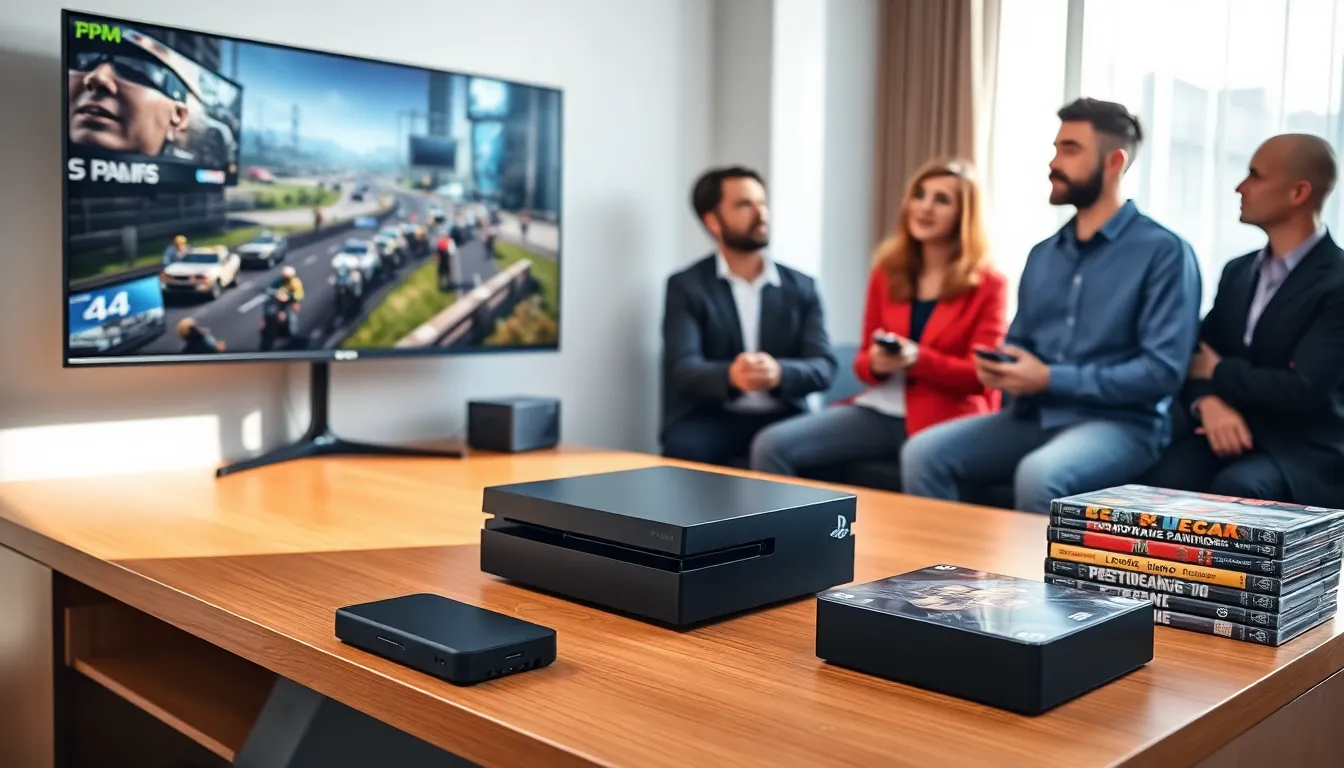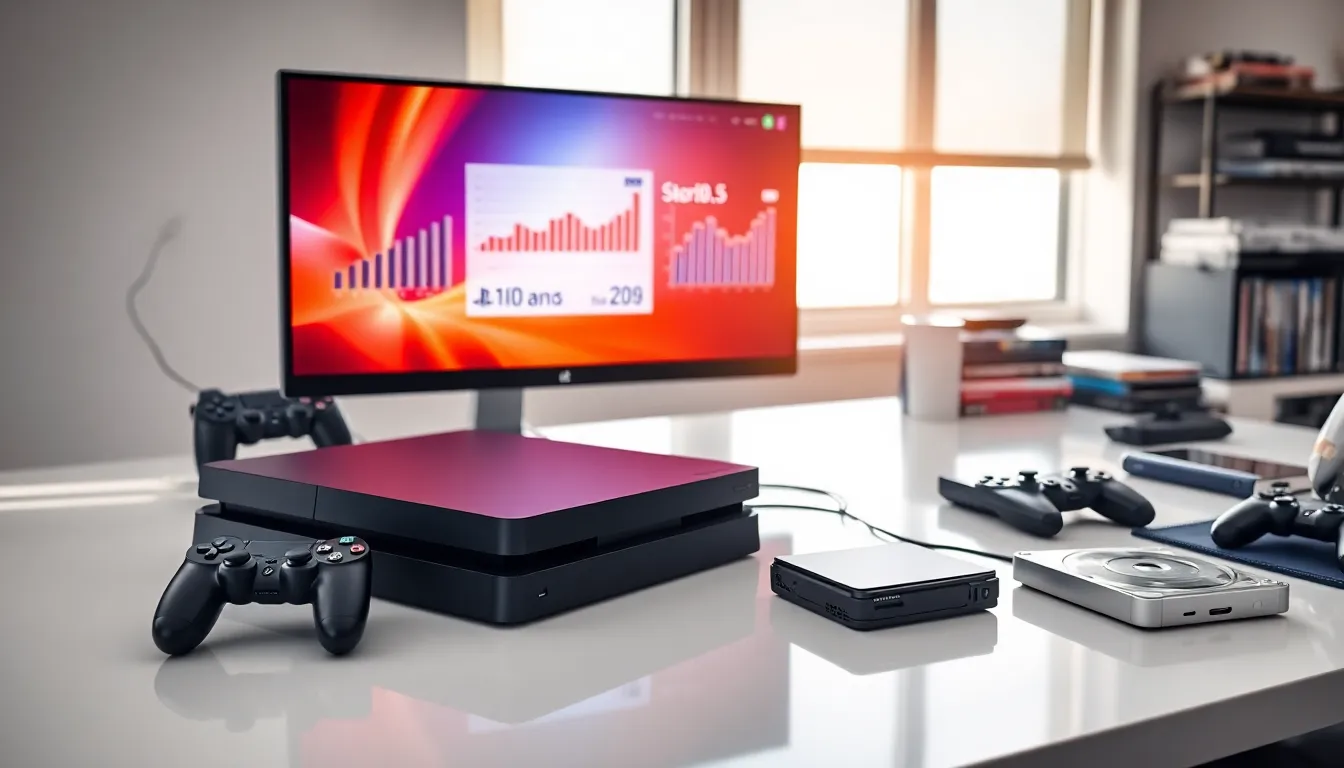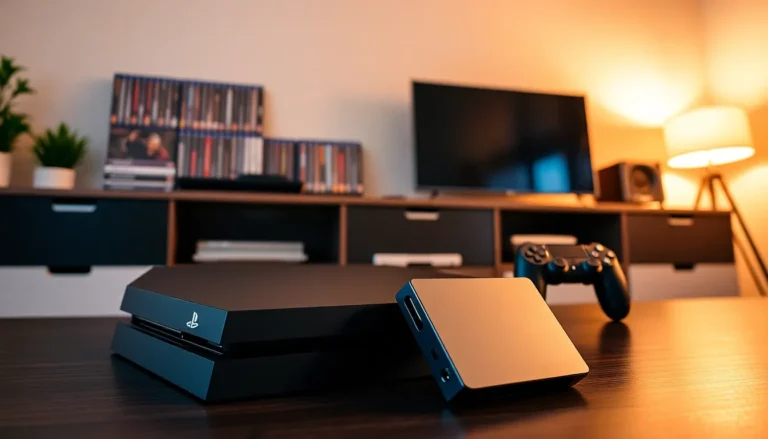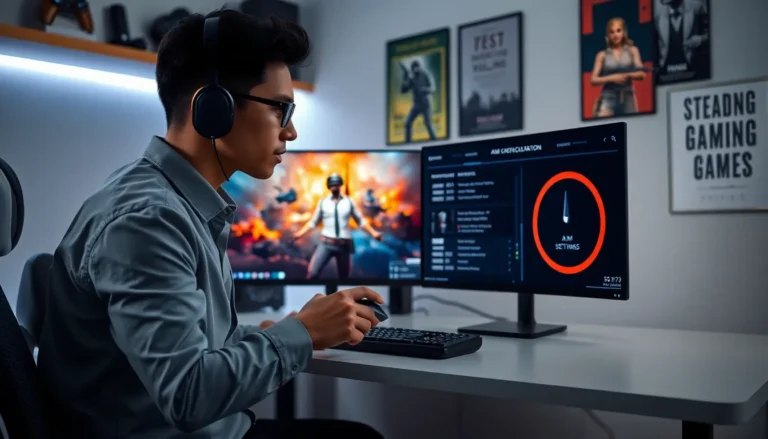Table of Contents
ToggleThe PlayStation 4 hard drive can seem like a dark abyss of storage limitations that gamers just can’t escape from. You blink, and suddenly your console is yelling at you about insufficient space. What’s going on? Did your games decide to form a secret society? Fear not. This guide will unravel the mystery of your PS4’s storage needs while arming you with all the knowledge you need to keep those pesky warnings at bay. Let’s immerse.
Understanding PlayStation 4 Storage Needs

In today’s gaming world, storage is king. Players need ample space for game installations, updates, and downloadable content. The standard PlayStation 4 comes equipped with a 500GB or 1TB hard drive. On the surface, this might sound generous, but once you start downloading games and patches, the reality sinks in. Some titles can take up to 100GB each. It doesn’t take long before the PS4 begins to cry for more space.
Understanding one’s storage needs begins with clarity on usage. Casual players may find a 1TB drive adequate. But, avid gamers should consider the implications of their habits. Streamers, for instance, might want even more space due to recording gameplay and archiving content. Hence, determining individual gaming patterns becomes critical when evaluating storage solutions.
Types of Hard Drives Compatible with PS4
Choosing the right hard drive for the PlayStation 4 can improve performance and storage capacity. The PS4 supports both traditional hard disk drives (HDDs) and solid-state drives (SSDs).
Solid-State Drives (SSDs)
SSDs are the new kid on the block, praised for their speed. Gamers looking for faster load times and improved overall performance will benefit. SSDs come at a higher price point but deliver in speed and reliability.
Hard Disk Drives (HDDs)
HDDs remain popular due to their affordability. They offer larger storage options for less money. Ideal for gamers who prefer a more cost-effective solution without the need for lightning-fast speeds.
Hybrid Drives
Hybrid drives offer a balance between HDDs and SSDs. They combine elements of both, providing moderate speed alongside substantial storage. These are great for gamers who need storage but aren’t quite ready to expensive for a full SSD.
Upgrading Your PS4 Hard Drive
Upgrading the hard drive in a PlayStation 4 isn’t a black art, it’s a process that most gamers can tackle on their own. It starts with backing up data, ensuring everything precious is safe before any upgrades begin.
Steps to Upgrade
- Backup Your Data: Make sure to save your game data either to the cloud or an external hard drive.
- Purchase a Compatible Drive: Whether opting for an SSD or HDD, ensure it meets PS4 specifications.
- Remove the Old Hard Drive: Using a screwdriver, remove the PS4’s outer cover to access the hard drive.
- Install the New Drive: Slot in the new drive and secure it in place.
- Reinstall the System Software: Download and install the PS4 system software onto the new drive via a USB stick.
With careful handling, this upgrade can lead to enhanced performance and more room for games.
How to Transfer Data to a New Hard Drive
After successfully installing the new hard drive, the next step is transferring data back onto it. Thankfully, this process is straightforward.
Data Transfer Methods
- Cloud Backup: If data was backed up to the cloud, simply re-download your games and save files from the PS Plus account.
- External Drive Backup: For those who used an external drive, connect it to the new PS4 and transfer the saved data back.
- Direct Transfer: If the old hard drive is still functional, players can transfer data directly by following on-screen prompts available in the PS4 settings.
Optimizing Storage Space on Your PS4
With limited storage, optimizing space becomes essential. Gamers can carry out several strategies to manage their storage effectively.
Techniques to Free Up Space
- Delete Unused Games: Regularly assess which titles are gathering digital dust.
- Manage Game Updates: Some games allow the removal of extra content or modes.
- Use External Storage: Consider adding an external hard drive for immediate space relief. This allows players to keep most of their library accessible without overloading the PS4’s internal storage.
Prioritizing space management creates a seamless gaming experience, reducing hiccups during gameplay.
Troubleshooting Common Hard Drive Issues
Even the best drives can run into issues. Identifying common problems can save gamers time and headaches.
Frequent Hard Drive Problems
- System Errors: PS4 may display error messages related to the hard drive. This could indicate issues with the drive itself. Restarting the console or re-initializing the software often solves the problem.
- Slow Load Times: If the PS4 appears sluggish, it might be time for a hard drive upgrade. High-capacity HDDs can become cluttered, resulting in poor performance.
- Corrupted Data: If save files seem corrupted, games may need reinstalling, or more drastic measures like formatting the drive could be necessary.





